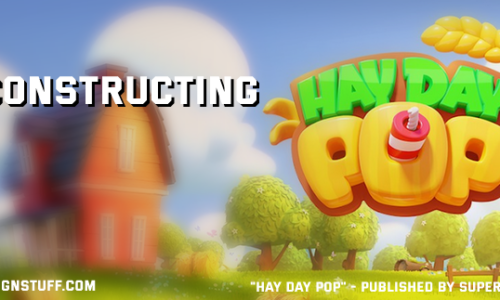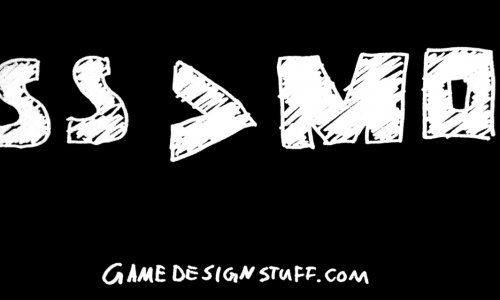Introduction

Download the excel file here:
SimCity_BuildIt_BalancingAnalysis
and look for yourself. It has more content than I will refer to in this article so taking a closer look might be useful.
I will start with a brief introduction regarding the focus of this article: Player Progression.
Progression
Games are about players pursuing a goal. In order to reach that goal players accomplish a subset of goals. “Progression” describes how far a player has come, reaching that goal. This often implies consuming a games content while moving on.
The content is consumed by engaging with the game mechanics. For example, in order to progress in an RPG (progress = Levels, Items, Story), the player needs to fight (core mechanic) enemies (obstacle).
What is progress in “Sim City BuildIt”? In Simulation games, or in social games in general, there often is no final goal which after reaching it, concludes the game. Progression itself is the goal in these games. Expanding, growing and exploring. Usually
economic challenges are imposed on the players as an obstacle to reaching their goal. Controlling the progression in games like that is crucial to their success in terms of longevity and monetization.
Goals of progression Control
Learning Curve & Ramping up new players
To not overwhelm players with too many Gameplay mechanics or systems in the beginning, the access to new features needs to spaced out. Giving players one bit of the game at the (right) time gives them the chance to learn the existing ones before presenting the next one. Although there is a fine line between spacing out unlocks of features for the sake of merely stretching the content (mostly for monetization reasons) and actually providing a smooth learning curve. Which leads to:
Lifetime
To overcome the progression blockers the designers have put into a game, the players are often asked to repeatedly execute the same loops. This increases the time spent with the same content. This only works if the core gameplay is highly replayable.
Hooking players
Having a lot of things happening and unlocking, keeps things more interesting. Bread crumbing the player through the early stages of a game to keep them engaged and helps getting them from install to showing the games full feature set. Once the player is hooked, things can slow down.
Long term goals
Having a clear measurable goal such as a level gives the player something to look forward to. Especially if they know what elements of the game are connected to reaching a level (e.g. unlocking new buildings, features or other content)
How it works
Unlocking new content or mechanics can be slower because players can spend increasingly more time engaging with the previously unlocked capabilities.
The number systems which the players can interact with or the complexity of the existing ones usually increases over time. This means, that the further the player has progressed, she can spend more time with different aspects of the game.
Example Lego, in the beginning you will need a lot of content (pieces) fast in order to build things. While too many pieces might overwhelm a child. Although obtaining more pieces (long term goal) is worthwhile (reward), the child can spend that time waiting for cChristmas with all the pieces it has collected up to that point.
How progression is controlled
Some examples for gameplay elements that have an impact on the player progression.
Level Thresholds
In games that use level-systems it is common to control to pace the progression by adjusting the XP curve. The XP needed to level up, increases with every level. Usually also the XP income increases (numbers always need to grow so players can see the progress). But at a lower rate than the thresholds. So overall the time to level up increases (Fig 1).

Adding Systems or Complexity
In MMOs sometimes non XP rewarding systems (such as crafting or PVP) are introduced which will slow down the player’s progression. During a round of Civilization turns get longer because the complexity is growing (number of cities, units, diplomatic options).
Difficulty / Randomness
Controlling the rate at which the player can consume content by letting her fail and repeat more often. Found in puzzle Games where some levels are simply harder (or more random) in order to require more rounds-played to finish.
Sim City Buildit
I will mostly cover the topic of the relation between the crafting system and the player progression. If you are looking for a more broader analysis of the game especially in regards to its free to play mechanics, I recommend reading the great deconstruction at the deconstructors of fun.
The Game
“Sim City BuildIt” boils down the concept of the original Sim City Series down to 2 systems: a Hay Day like crafting and old school city building mechanics as found in previous Sim City titles or the “Anno” series where the placement of support-buildings is crucial in order to grow a city. Notions of Sim City’s well known RCI Zones (residential, commercial and industrial) can still be identified but they merely continue to exist thematically.
Core Gameplay
Crafting is the pacemaker of the whole economy. Everything hinges on players capabilities to create products which she then can either use to upgrade residential buildings or convert them into soft currency through trading, the Cargo ship, disasters, or randomly appearing Deals.
Players expand their city by building residential buildings which will increase a city’s population when upgraded. Residential buildings require coverage of Utility and Service buildings such as power plants, hospitals etc.. Adding a residential building to the city will come at the cost of providing a sufficient service and utility supply. These supporting buildings can be built with soft currency. To maximize the effects of supporting buildings, players need to re-layout their cities from time to time. Meeting the citizen’s demands increases their happiness which will in return increase the tax income (SC).
Progression Sim City BuildIt
The player’s goal is to expand her city. Many of the systems to control progression are tied to the level of a player. Although they may appear simply as a burden when looked at from a systematical perspective, for players they are tasks and challenges that they want to overcome in order to reach their goal. Finding the sweet spot between challenging and driving players away is among the tough tasks when balancing the progression of a free to play game since this is where the monetization hinges.
Soft Currency
The Soft Currency economy is as important for the progression as upgrading houses. By adding residential buildings the player expands the city and increases the population’s demands, and SC is used to meet these demands.
Players have two options to increase Population (Fig 2):
- Build more houses (which will increase utility or service cost)
- boost the population of the existing houses by building Parks or “Key” buildings

The latter does NOT add to the utility costs. And since there are no new buildings added, the service cost (buildings that provide happiness through area-coverage) also remain the same. But of course the designers have accounted for that strategy by adding a distinct cost to increasing population in the existing houses: players need to upgrades the roads for a large SC amount to keep the population in these houses happy.
SC is generated in 3 ways.
- Sell products (either Trading or random-deals)
- Upgrade Buildings
- Taxes
There are 3 Sinks for SC:
- Utility costs (water, power, sewage) are increased by +1 for every additional house built.
- Services (buildings that satisfy a certain demand by covering the area around it)
- Parks & Departments boost the people living in a house
- Trading
Random SC Rewards for upgrades
Coin rewards per upgraded are very fluctuating. They are always with a certain range. The average amount of earned SC increases by level but also the range (min max value to determine the amount) is increasing SC Ranges (Fig 3). By randomizing the rewards the game becomes less predictable the overall feeling for progression is smoother than with fixed rewards per level.

Taxes
Happiness and population size is used to determine the SC production of the town hall. The happiness determines the tax bracket, and is then scaled by the population by a certain multiplier.

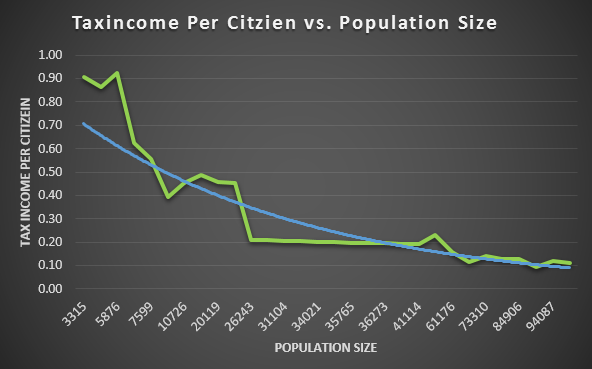
Demands & Utilities

In the early phase of the game, no services need to be provided to the population. Players gradually unlock them. If services are not provided, the happiness of the population is reduced (Fig. 4).
This introduces a new coin sink without any additional benefit for the player. The player needs to invest SC in order to maintain the current game state. So every time the player unlocks a new demand, or builds a new residential house, this creates a cost that needs to be accounted for with SC. In Fig. 6 you can see how the “cost” per additional building evolves throughout the game.

The cost per residential building is calculated by stacking the average cost of meeting the demands. The farther the player has come in the game, the more SC it will cost to get the max happiness out of a residential building. And because happiness is provided by buildings purchased with soft currency, the time needed to support a residential house increases as well.

Players go through a constant cycle of expanding and grinding making their progression plateau until enough SC has been earned & invested.

There is also another progression dampening side effect to this. The player needs to change and optimize her city layout when she unlocks a new demand. When plopping the new buildings they make every other building that supplies happiness to residential buildings less effective. Because the residential buildings are spread out wider to make room for the new utility/specialization building hence, the area that needs to be covered with services becomes larger by an amount of tiles that is larger than the newly added residential building.

The whole system of coin-sinks is a good example for a Red Queen Dilemma (the player needs to work more to maintain her current gamestate) or the good old carrot on a stick.
This way, every level up where the player unlocks a new Population-Demand becomes a potential monetization point. These kind of systems are the meat of Free to play economy balancing.
An issue I see with this system in “Sim City BuildIt” in particular, is that leveling up doesn’t really feel good and actually avoiding to level up is good strategy because the game is very tight on the Soft-Currency Economy. Leveling up is not rewarding and does thereby not qualify as a goal for the player.
XP & Levels
Upgrading Residential Areas

Upgrading buildings is one of the core activities and goals in “Sim City BuildIt”. It is the only way to earn XP and one of many ways to earn Soft Currency. A residential building can be upgraded 5 times, each time granting XP and coins and a population boost.
This means, by adding a new building, the players also create a source for coins and XP that can be exhausted. The total amount of XP that can be earned by player is thereby limited by the residential buildings that have been built.

In Fig.7 you can see the XP curve, showing the amount of XP that is required for a certain level. This curve doesn’t look too exiting at first glance. The interesting question for these type of curves is, at what rate does it increase?And usually the rate at which increases, is increasing as well, creating an exponential growth. So to get this number, we need to look at the XP-Requirement-Increase from level to level.

Now things get a bit more interesting! As you can see the XP-Requirement does not grow steadily. For each upgrade of a residential building, the players will receive XP. The amount of XP rewarded is a random value in a range which seems to be configured by level. The base-rate is increasing by level. This is expected since XP income usually grows. To convey a feeling of progression to the player, numbers always need to grow.
Since upgrades equals XP, the number of upgrades required by level can be simply calculated by looking up the XP income for an upgrade at a specific level and use that to divide the amount of XP required for that level (Fig. 9).

Fig10. shows how the number of required upgrades per level differ. This means that players will have faster and slower level ups, alternating by 1 upgrade more or less per level.

By having some fluctuation the progression is not too rigid and predictable. A progression with small bumps feels better than absolute linearity. Slower and faster levels can be created.
It is interesting that the required amount of upgrades sometimes decreases. But it makes sense – by that, the designers can have a strong “bumpiness” by maintaining an overall slow growth.
Crafting
Crafting is the core of the gameplay and everything revolves around it. The whole session design and most of the progression is handled by this system. Through crafting players generate XP and SC, the two resources that players need to progress. The player is therefor under constant pressure to always keep the crafting queue running.
There are several implications in the crafting system when the players level up. Each of them eventually leading to a slowed down progression due to an increased complexity in the core loop.
Increasing Material Requirements per Upgrade
Material requirements for a residential-house-upgrade depend on 3 Factors (Fig. 11):
- the number of materials slots
- the material type
- the amount of materials

Product Requirement Slots
To upgrade residential buildings in the first session, the player only needs to manage a very limited set of products. This leads to a very high upgrade-rate for the first sessions. There is almost always a match between what the player has in her inventory and that what a house requires to be upgraded. The core loop gets executed often and fast because timers are fast and requirements are low.

This is exactly how the early phase of a free to play simulation game should feel. And it is entirely controlled by the crafting system. Additional product-requirement slots are introduced over the course of the game (Fig 12).
Increasing required material naturally leads to the player spending more time on the core loop. In other terms, each upgrade will ask for more player engagement.
There is a side effect to this mechanic: The material types and counts are more or less generated randomly per slot (that will be covered in a later section). So by increasing the possible slots for an upgrade, the stress on inventory management is increased.
Unlocking Product Types
As the player progresses, she unlocks new products making the range of possible requirements larger. Gaining access to a new product also implies building the production-building for that type of product if it is the first of its kind. Building this production facility of course requires coins. As soon as the player unlocks a new product Type, it can show up in the upgrade requirements for residential buildings.
Gaining access to more crafting products will also force the players to care more and more about inventory management. With each new product unlocked it becomes more likely that players will hit the inventory limit. Which will then push them into engaging with the trading systems in order to obtain the materials needed to increase the inventory or to get rid of excess products.
Although new material types put the players into a disadvantageous position, it keeps the game interesting. Always producing the same items would be too boring after a while. With multiple possible products, players have to plan and organize their production queues which becomes one of the few challenges in the game. This is also what is limiting this system in terms of scalability. Adding too many crafting products with longer timers or more complex recipes doesn’t make the game more interesting after certain point.
Recipe Complexity

As the game progresses, timers on products not only get longer, also the recipes become more complex. In the early game, the products needed to upgrade a building are often simply some raw products.
In the mid game, more products are unlocked that require raw materials as an ingredient. This significantly increases the production time for this product because this time is added to the actual production time.
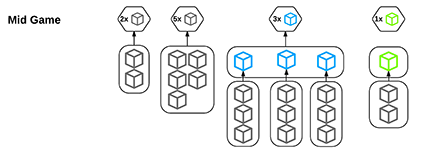
And then there are even some products that need ingredients that need to be crafted from raw materials.

3 Dimensional Scaling
Having these 3 axes to balance the core loop gives the designers to capability to tune the system in different ways but with the same outcome, modifying the “Time to level”.
XP meets Crafting System
Now I will combine all these mechanics to show how the progression actually develops over time. Again, progression means the “moving towards the end goal of a game”, which in Sim City is, expanding and optimizing the city. To reach this goal, players need to complete the core loop of producing, collecting and investing products.
The time to level in Sim City can be calculated like this
Time to Level = NumberOfUpgrades * ProductsRequiredPerUpgrade * ProductProductionTime
NumberUpgrades = XPForLevel / XP per Building
ProductsRequiredPerUpgrade = SlotsPerUpgrade * ProductQuantityPerSlot
All of these factors are increasing, all of the small increases, lead to huge increase of the Time-To-Levelup.
- Increasing number of Upgrades per Level: The number of upgrades is growing because the XP-Threshold is increasing faster than the XP Income Per upgrade.
- The Slots per Upgrade are increasing up to a maximum of 6 at level 15.
- The amount of products per slot stay about the same so the main increase from products per Upgrade comes from the added Slot
- Production time increases as more and more products with longer timers are thrown into the mix

There is one mechanic that compensates a bit for all these increasing requirements. Over time the players can build more factories with more production slots (Fig.13).
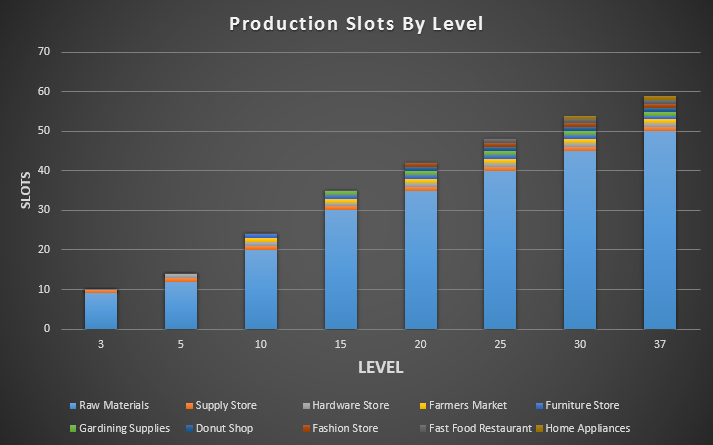
This compensates only the production time though as each product needs to be queued up and collected. So the amount of work (queuing up the products and collecting them) on the player side is still increasing proportional to the amount of products. Even if the growing production capabilities are set in relation to the increasing upgrade cost, the ratio increases over time, letting the players spend more time in the core loop until they can progress.
Distribution of Products
This section is about the probability for certain item types to get chosen as an upgrade requirement for residential buildings. The data I could collect to make this analysis is by far not enough to draw very accurate conclusions about the probabilities but there are at least some quite obvious tendencies.
The probability for each product is calculated by looking at how often that item was a requirement compared to all the recorded upgrades. To account for items being unlocked later in the game, the “RequiredCount” has been normalized (Check the spreadsheet for more insights into this). I just want you to be aware of that normalization when looking at the charts because some products just have a few data points but are treated equally to those with a lot of data points.
Observation 1
Ratio of “Raw Products” to “Manufactured Products” is 1:1 – Raw products are created in factories where all production slots are active in parallel. Manufactured Products are those built in “Stores”. Stores only have one 1 active production slot, but players can queue up products. Manufactured materials are always created from Raw Products.
Observation 2
Quick products are more frequent. At least for raw products it is clear that those that can be produced fast, are more often used to upgrade buildings (Fig. 15).

For Manufactured Products this no clearly supported by the data (Fig. 16)

Conclusion
The distribution of products is a system the designers can utilize to tune the session design.
A mix of different item types with varying production times is preferable. But shorter timers need to be more frequent in order to shape a “good” session:
Players are kept engaged during the session as long as they have a reason to produce quick materials until only those products with long timers are left, letting the players end their session after queuing them up. The goal of most social games is not to have the users playing as long as possible, but in small chunks distributed over the day, so the content doesn’t get exhausted to fast but the player gets used to engage with the game on a regular basis.
Summary
The means of controlling the progression in “Sim City BuildIt” are subtle but very effective. This stems from a lot of small progression-dampening systems working together on multiple levels (Crafting, Soft Currency Sources & Sinks, and City Lay outing). The designers have tuned these systems in a way that they are not too harsh to the player and ease them smoothly into the habit & hobby phase.
In a nutshell
- SC is the gating resource
- Gradually increasing SC sinks by unlocking new demands
- For each expansion players need to invest a growing amount of SC in order to maintain population happiness
- SC income increases at a lower rate than the SC sinks
- Each level requires more and more upgrades of residential buildings
- Upgrade time increases by asking for more products and different kinds of products
- Efficient session design through the crafting system








